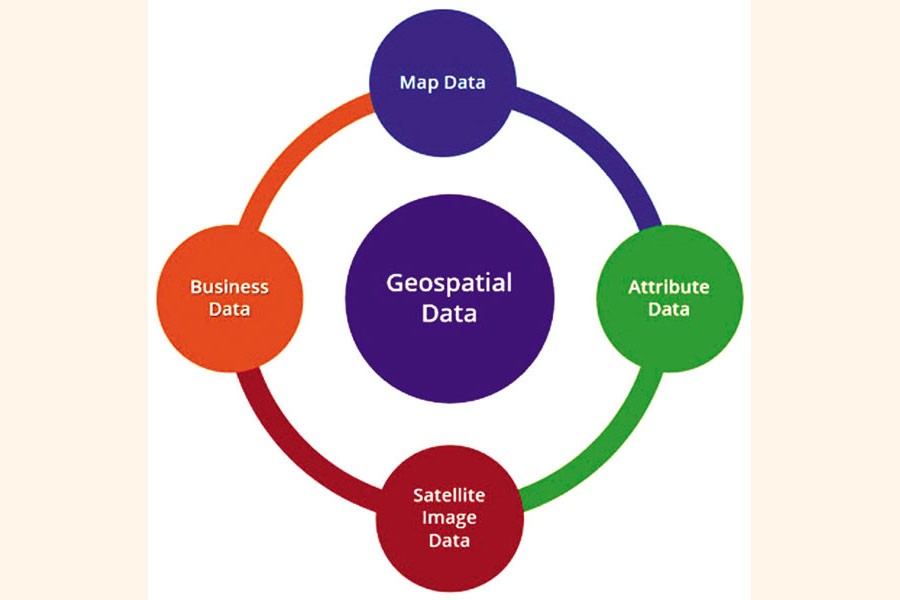Today this question is often answered with a glance at a smartphone and a whole host of behind-the-scenes geospatial and other data working to provide easy-to-understand information in the palm of our hand. Data is a renewable resource that does not disappear once it is used. With use, more value is added, enriching data to provide more frequent, accurate, on-demand information. As underlined in the Data Strategy of the UN Secretary-General, data has become a strategic asset.
From basic topographic features on a map to complex 3-D models and images of natural phenomenon beyond what the human eye can see, space technology applications provide far-reaching solutions to the pressing issues facing humanity. Today, geospatial information has expanded into almost every sector and more people around the world are realising the potential of geospatial information and its applications.
Asia and the Pacific are home to some of the most advanced spacefaring countries in the world, many of them willing to support less developed countries build their capacity to use space applications. But how are those in need of ideas and inspiration to find it?
By seeing practical examples of how geospatial information has been used along with the social and economic benefits, policymakers and practitioners can see clearly how replicating or tailoring an application for their country can help support many areas of development. Geospatial Practices for Sustainable Development in Asia and the Pacific, 2020: A Compendium seeks to inspire more applications for geospatial information, promote peer learning and innovative thinking and assess the implementation of the Asia-Pacific Plan of Action on Space Applications for Sustainable Development (2018-2030). This Plan of Action, endorsed by member States in 2018, is an inclusive and country-needs driven blueprint that harnesses space and geospatial applications, as well as digital innovations to support countries, particularly those with special needs, to achieve the 2030 Agenda.
COVID-19 RESPONSES: Long before the Covid-19 pandemic hit, the drafters of the Plan of Action had the foresight to include leveraging geospatial information for monitoring, responding to and preparing for pandemics.
As the pandemic progresses, Governments around the world rely on measures, such as contact tracing, quarantining, and social distancing. Geospatial information forms the backbone of these applications. Many countries have put in place geospatial information systems and have shown that hotspot mapping, contact tracing, and early warning systems open to the public are all capable of strengthening the preparedness for Covid-19, as well as other disasters. These applications can also help in the recovery phase to build back better, by providing an evidence base for decisions on the easing of lockdown and the resumption of economic and social activities. Many countries within Asia and the Pacific have already developed Covid-19 geospatial tools; some of these featured in the compendium include China, Fiji, Indonesia, The Republic of Korea and Thailand among others.
In addition to supporting the Covid-19 response, geospatial information applications also present powerful solutions to other aspects of sustainable development. The compendium provides an overview of the regional status and progress in six thematic areas: (1) disaster risk management; (2) natural resource management; (3) connectivity; (4) social development; (5) energy; and (6) climate change of the Regional Road Map for Implementing the 2030 Agenda for Sustainable Development in Asia and the Pacific and Plan of Action, based on the contribution of over 100 examples from countries and partners in the region. Furthermore, it explores trends and innovative geospatial technologies which have been employed to find new and emerging solutions to sustainable development.
From the monitoring and management of crops in Thailand to the leveraging of Smart City Technology during the Covid-19 pandemic in Indonesia and Republic of Korea, this compendium demonstrates the diverse use for geospatial information and applications and the vital role that they will continue to play in the future. This compendium will hopefully: Promote peer learning and innovative thinking, encourage regional cooperation, and inspire increased investment in geospatial data-driven responses to building back better.
Where are we? The "new normal" of a world with Covid-19 means we are and will continue to be aware of where we are physically in relation to others, potential risks, and how to stay as safe as possible. To best do this, geospatial data and space applications should be accessible, available, actionable and affordable to benefit all people.
Juliet Braslow is Associate Economic Affairs Officer, United Nations Economic and Social Commission for Asia and the Pacific (ESCAP) UNESCAP. Ayeisha Sheldon is Individual Contractor, UNESCAP. Rhys Persoon is Intern, UNESCAP. [www.unescap.org]


